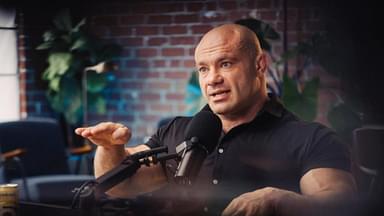Hypertrophy is one of the main goals for aspiring bodybuilders entering the gym, hoping to increase muscle mass by working with heavy weights. However, if not done properly, this could end up either being useless for gains or, worse, hurt the athlete. This is why Dr. Mike Israetel wanted to show the correct ways to lift for building optimum mass.
He teamed up with fellow exercise scientist Dr. Pak Androulakis-Korakakis to address the subject holistically. Through their conversation, they divided the different components of the lifting technique into three parts.
- Range of motion
- Tempo
- Exercise kinematics
Range of motion
This has been a subject that Dr. Israetel has spoken about several times in the context of working with weights. To ensure maximum output and the best results on one’s muscle mass, it is important to apply a full range of motion. This technique involves completely stretching the length of the muscles, which is crucial to the purpose.
“What seems to be relatively clear with some terms and conditions is that the stretched position, the lengthened position of a muscle, putting your muscle in that lengthened position is beneficial for hypertrophy.”
Tempo
Dr. Pak described tempo during lifts as the process of executing eccentric or concentric movements while lifting. Depending on the kind of study and context one read up on, slowing down either one and rapidly moving through the other could maximize gains.
Here’s where the subjectivity of the situation enters, as the exercise scientist admitted that studies were not adequate to make conclusions. Generally speaking, he observed that a slower eccentric movement allowed more stretch to the muscle, which is preferable.
Kinematics
These are the small modifications made to the posture and position assumed while exercising to make it more exciting and challenging. They include different placement of thumbs, keeping the feet closer or further apart, or even pointing the digits upwards or downwards. In the case of Arnold Schwarzenegger, he even resorted to lying sideways while performing dumbbell raises to develop his deltoids.
Dr. Pak once again admitted that there wasn’t enough evidence to suggest the superiority of one placement over the other. It depended entirely on the fitness enthusiast performing the designated exercise. Generally, a good indication of optimum exercise kinematics was to narrow down on a technique that felt equally comfortable and challenging.
“Exercise specific kinematics are pretty straightforward…as long as an exercise isn’t causing you grotesque pain, that some exercises are of categorically off limits and some kind of techniques are categorically off limits.”
Concluding notes from Dr. Pak and Dr. Mike Israetel
The technique of achieving optimum lifts has several nuances in itself, ranging from the speed of motion to the placement of one’s body. Yet, when hypertrophy is the main goal, it’s a good idea to constantly challenge oneself with increased stretch to the muscles and apply a full range of motion. Trial and error can otherwise set things straight, and both Dr. Pak and Dr. Israetel believed that aspiring bodybuilders could benefit from these tips.





